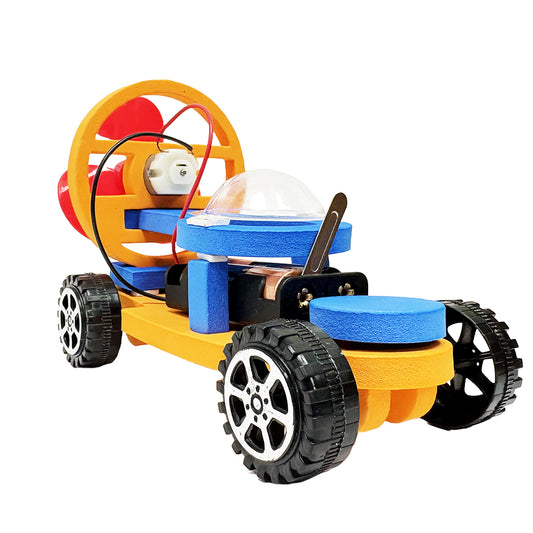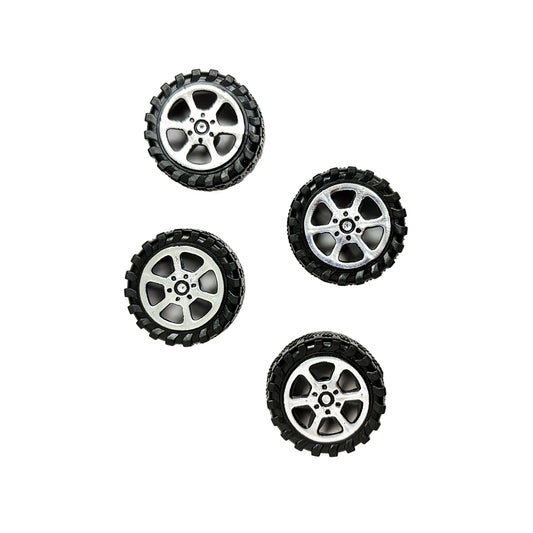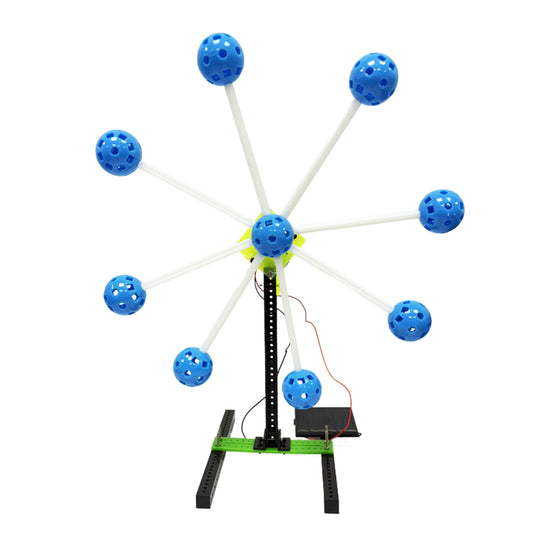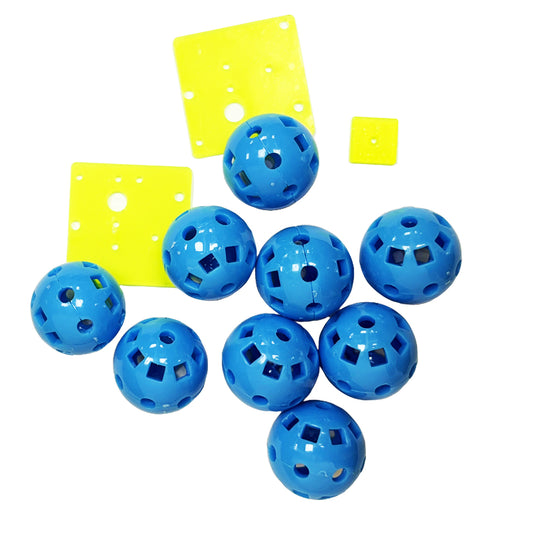
Electric Cable Wires: How to Choose the Right One
IEM RoboticsTable of Content
- Understanding Electric Cable Wires
-
Composition of Electric Cable Wires
-
Types of Electric Cable Wires
-
Importance of Choosing the Right Wire
-
Raspberry Pi Jumper Wires: An Overview
-
Raspberry Pi Jumper Wires: Importance and Applications
-
Importance of Jumper cables for Raspberry Pi Projects
-
Applications of Jumper Cables for Raspberry Pi Projects
-
Selecting the Right Jumper Wires
-
Pricing Considerations
- Conclusion
Electric cable wires are the backbone of electrical and electronic systems, crucial in industrial and DIY applications. They are designed to efficiently transmit electrical power and signals efficiently, ensuring seamless connectivity between components. In industrial settings, electric wires are used for power distribution, automation, and communication, while in hobbyist electronics, they are essential for prototyping and small-scale projects.
Jumper wires are indispensable for DIY enthusiasts and makers, particularly those working with platforms like Raspberry Pi. These specialized wires allow users to create flexible, temporary electrical connections without soldering, making them ideal for testing circuits, debugging prototypes, and quickly building interactive projects.
This guide explores the essentials of electric cable wires, focusing on Raspberry Pi jumper wires. It covers the types of cables, their practical applications, and key factors to consider when selecting the correct wires for various electronic projects.
Understanding Electric Cable Wires
Electric cable wires are essential for transmitting electrical power and signals in various residential, commercial, and industrial applications. These wires conduct electricity safely and efficiently, ensuring a stable connection between power sources and electrical devices.
An electric cable contains one or more insulated conductors, usually made of copper or aluminum, enclosed in a protective sheath. The insulation prevents electrical leakage and protects the conductors from damage, moisture, and environmental factors. The outer sheath provides additional durability and resistance against heat, chemicals, and mechanical wear. Various applications utilize them, including industrial machinery, home wiring, automotive systems, and small electronics projects like Raspberry Pi and Arduino.
Composition of Electric Cable Wires
Electric cables have several essential layers that ensure safe and efficient electricity transmission. These layers typically include the conductor, insulation, and sometimes an outer sheath for extra protection. The interplay of these elements influences the wire's conductivity, flexibility, durability, and environmental resistance.
1. Conductor: The Core of Electric Wires
The conductor forms the inner core of a wire, playing a crucial role in transmitting electrical current. The primary materials used for conductors include:
● Copper is the most favored option in various electrical applications. Experts praise its excellent electrical conductivity, flexibility, and corrosion resistance. Copper wires minimize energy loss, making them highly efficient for power transmission.
● Aluminum: High-voltage power lines frequently use aluminum as a lighter and more budget-friendly alternative to copper. However, it has lower conductivity than copper and is more susceptible to oxidation, necessitating extra protective measures.
● Silver-plated copper: Specialized contexts that demand exceptional conductivity, such as aerospace and high-frequency signal transmission, use it.
2. Insulation: Ensuring Safety and Efficiency
Insulation is a protective layer around the conductor, preventing direct contact between wires and minimizing the risk of short circuits, electrical shocks, and fires. Common insulation materials include:
● PVC (Polyvinyl Chloride): Cost-effective, durable, and moisture-resistant, making it suitable for household wiring.
● Rubber: Offers excellent flexibility and heat resistance, ideal for industrial and outdoor applications.
● Teflon (PTFE): Used in high-temperature environments due to its superior heat and chemical resistance.
3. Sheath: Extra Protection for Durability
Specific cables feature an outer sheath for added protection. This layer safeguards the wire from environmental risks, including extreme temperatures, moisture, chemicals, and physical wear. These sheaths typically appear in underground cables, industrial wiring, and high-voltage applications.
Types of Electric Cable Wires
Electric wires are available in various types, each designed to meet specific electrical and mechanical requirements. They are classified based on their structure and function, ensuring the efficient transmission of electrical energy while minimizing losses and risks.
1. Single-Core Wires
Single-core wires comprise a single conductor surrounded by an insulating layer. They are typically used in straightforward electrical circuits, home wiring, and low-voltage applications. Because of their rigid design, they are ideal for fixed installations where flexibility isn't a significant issue. These wires are straightforward to install and maintain, making them popular for residential and industrial environments.
2. Multi-Core Cables
Multi-core cables consist of several insulated conductors grouped in a single protective sheath. They are frequently used in complex electrical systems, such as audio-video transmission setups, industrial machinery, and control panels. Including multiple cores enables various electrical connections within one cable, minimizing clutter and enhancing efficiency. These cables are particularly suited for applications that need power distribution and signal transmission among different components.
3. Shielded Cables
Shielded cables come with an extra layer of protection, usually made from metal braid or foil, to minimize electromagnetic interference (EMI). These cables are commonly found in communication systems, computer networking, and audio-video applications where maintaining signal quality is essential. The shielding effectively blocks outside electrical noise from disrupting the signals, allowing for precise and consistent transmission.
4. Flexible Wires
Flexible wires consist of several thin strands of conductors twisted together, enhancing their flexibility and durability. Applications that involve regular movement, such as robotics, automotive systems, and machinery with moving components, typically utilize these wires. Their excellent flexibility helps prevent breakage and extends their lifespan, making them perfect for dynamic electrical connections.
Importance of Choosing the Right Wire
Selecting the appropriate electric cable wire depends on current capacity, voltage rating, insulation type, and application environment. Using the wrong wire can lead to overheating, short circuits, or system failures. Understanding these factors ensures safe and efficient power transmission in any electrical project. For DIY enthusiasts and professionals working with Raspberry Pi, jumper wires provide an easy, flexible, and efficient way to prototype and test circuits. They eliminate the need for permanent soldering, making them ideal for rapid modifications and troubleshooting. With various types like male-to-male, male-to-female, and female-to-female, these wires cater to different connectivity requirements in projects involving sensors, LEDs, motors, and communication modules. Selecting the correct type of wire for high-power applications or delicate signal transmissions ensures stability, durability, and efficiency in any electrical system. Additionally, considering factors like wire gauge, insulation quality, and compatibility enhances project success and longevity.
Raspberry Pi Jumper Wires: An Overview
Jumper wires are fundamental for prototyping and testing electronic circuits, especially with microcontroller platforms like Raspberry Pi. They enable quick and efficient connections between different components without requiring permanent soldering. This flexibility makes them ideal for beginners, hobbyists, and professionals working on electronics projects. Jumper wires come in different colors to help users quickly identify connections in complex circuits. They are commonly used with breadboards, sensors, motors, and other peripherals to create functional circuits without the hassle of direct wiring.
Types of Jumper Wires
1. Male-to-male jumper Wires:—These have metal pins (male connectors) on both ends, making them perfect for connecting two female headers. They link components on a breadboard or connect different modules via intermediary boards.
2. Male-to-Female Jumper Wires—These wires,– Featuring a male pin on one end and a female socket on the other, connect Raspberry Pi GPIO pins to external modules, such as sensors, displays, or actuators.
3. Female-to-Female Jumper Wires:—These wires, equipped with female sockets at both ends, can bridge connections between two male header pins. It allows for linking separate modules or connecting with Raspberry Pi's GPIO pins via extension headers.
Each type of jumper wire serves a unique purpose, ensuring seamless and adaptable connectivity in Raspberry Pi projects.
Raspberry Pi Jumper Wires: Importance and Applications"
Jumper wires are crucial for Raspberry Pi projects. They allow users to establish flexible and temporary electrical connections without soldering, making them ideal for efficient prototyping, testing, and modifying circuits. Available in male-to-male, male-to-female, and female-to-female configurations, jumper wires provide a variety of connectivity choices for different electronic endeavors. Their color-coded insulation simplifies circuit organization and helps avoid wiring mistakes.
Importance of Jumper cables for raspberry pi Projects
Jumper wires are essential for Raspberry Pi projects, facilitating circuit design, experimentation, and troubleshooting. Their advantages are:
● Flexibility – As reusable components, jumper wires enable easy modifications and troubleshooting without needing permanent connections, which is particularly beneficial for iterative project development.
● Versatility – They accommodate a range of components and modules, from sensors to displays, making them ideal for diverse applications.
● Ease of Use – Jumper wires streamline circuit construction and testing, making Raspberry Pi projects more accessible to beginners and enthusiasts, alike professionals.
Applications of Jumper cables for raspberry pi Projects
Jumper wires are used across multiple applications in Raspberry Pi projects, facilitating different functionalities:
1. Sensor Integration – People often use Raspberry Pi with temperature, humidity, motion, or light sensors. Jumper wires connect these sensors to the GPIO (General-Purpose Input/Output) pins, enabling data collection and automation.
2. LED Control – Raspberry Pi projects commonly use LEDs as indicators, displays, or decorative elements. Jumper wires help connect LEDs to the board, allowing users to program and control their illumination through GPIO scripting.
3. Motor Control – Robotics projects often involve motors for movement. Jumper wires link the Raspberry Pi with motor drivers or servos, allowing precise control over robotic mechanisms.
4. Communication Modules- Raspberry Pi supports various communication modules, such as GPS, Bluetooth, Wi-Fi, and RF transmitters. Jumper wires connect these modules to the board, enabling wireless communication and extended project capabilities.
Jumper wires in Raspberry Pi setups allow users to easily construct, adjust, and enhance their projects. These wires offer a dependable way to link and explore various electronic components, whether for home automation, robotics, or IoT applications.
Selecting the Right Jumper Wires
When choosing Jumper cables for Raspberry Pi projects, consider the following factors:
● Length: Choose suitable lengths based on your project's layout to maintain neat and manageable wiring.
● Connector Type: Verify compatibility with the components and headers used in your project.
● Wire Gauge: While thicker wires (lower gauge numbers) can handle more current, they are less flexible; select based on your project's power needs.
● Insulation Material: High-quality insulation guarantees durability and safety, particularly for projects with higher voltages.
Pricing Considerations
The cost of jumper wires and electric wire price varies based on material, length, and quality. While specific cable wire prices are not detailed here, sourcing components from reputable suppliers is advisable to ensure reliability and safety in your projects.
Conclusion
Electric cable wires are fundamental components in industrial and DIY electronics projects. They ensure efficient electrical connectivity for everything from large-scale power distribution to intricate Raspberry Pi applications. Understanding the different types of electric cables—single-core, multi-core, shielded, and flexible wires—allows users to select the correct wire for their specific needs, optimizing performance and safety..
By investing in high-quality electric cables and jumper wires, users can build reliable, scalable, and safe electronic systems for industrial automation, robotics, home automation, or innovative DIY projects..








